Maintaining the right pH levels in a freshwater tropical fish aquarium is crucial for the well-being of the fish. pH, which stands for ‘power of hydrogen’, measures the acidity or alkalinity of the water on a scale from 0 to 14, with 7 being neutral. Tropical fish thrive in a specific pH range, and while most can adapt to slight variations, ensuring the water quality falls within their preferred parameters helps prevent stress and health issues.
When setting up a tropical aquarium, aim for pH levels that mostly fall between 6.5 and 7.8. This range supports a wide variety of tropical fish. However, I always keep in mind that some species, such as Discus, prefer more acidic conditions, while others like African cichlids enjoy a higher pH. It’s a balancing act that requires regular testing and adjustment to ensure that each fish receives the optimal environment for its species-specific needs.
Understanding PH Levels in Tropical Fish Aquariums
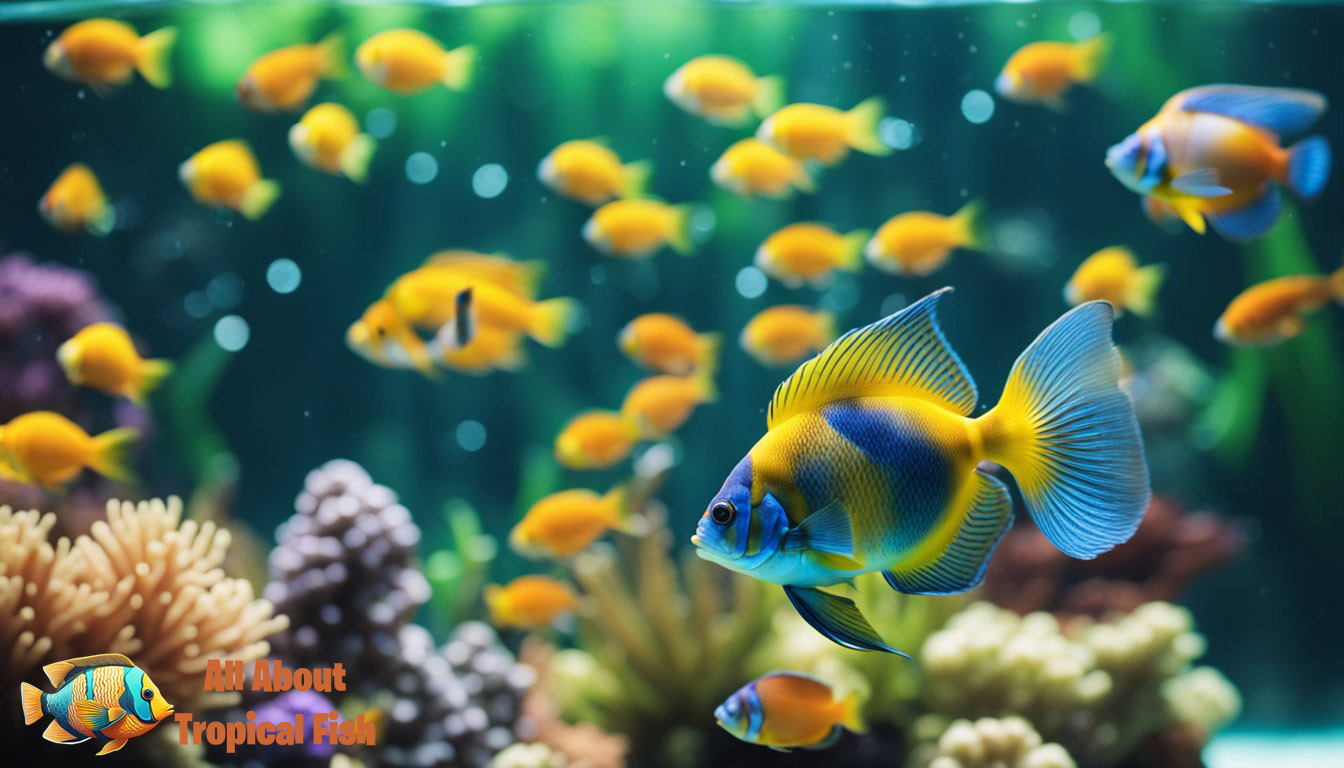
When maintaining a tropical fish aquarium, understanding the pH level is critical for the health of the fish.
The PH Scale and What Levels Are Safe for Tropical Fish
The pH scale runs from 0 to 14:
- 0-6: Acidic
- 7: Neutral
- 8-14: Alkaline
As mentioned, most tropical fish thrive in water with a pH range of 6.5 to 7.8, which I always strive to achieve. However, each species might have specific needs. For instance:
- Discus fish: Prefer a pH range of 5.5 to 6.5
- African cichlids: Prefer a pH range of 7.8 to 8.5
Testing and Monitoring Aquarium PH Levels
To keep tropical fish healthy, regularly test the water’s pH. There are various test kits available, including:
- pH test strips
- Liquid test kits
- Digital pH meters
Liquid test kits or a digital pH meter are preferred for more accurate readings. It’s essential to follow the manufacturer’s instructions carefully to ensure the accuracy of tests.
Factors Affecting PH in Freshwater Aquariums
Multiple factors can alter the water pH in an aquarium:
- Substrate: Certain substrates release minerals that change water chemistry.
- Décor: Driftwood tends to lower pH, while shells or coral can raise it.
- CO₂ Levels: Higher CO₂ levels can lower pH.
- Tap Water: The pH of tap water varies widely, so I always check it before adding it to my aquarium.
Acidity and Alkalinity in Aquatic Environments
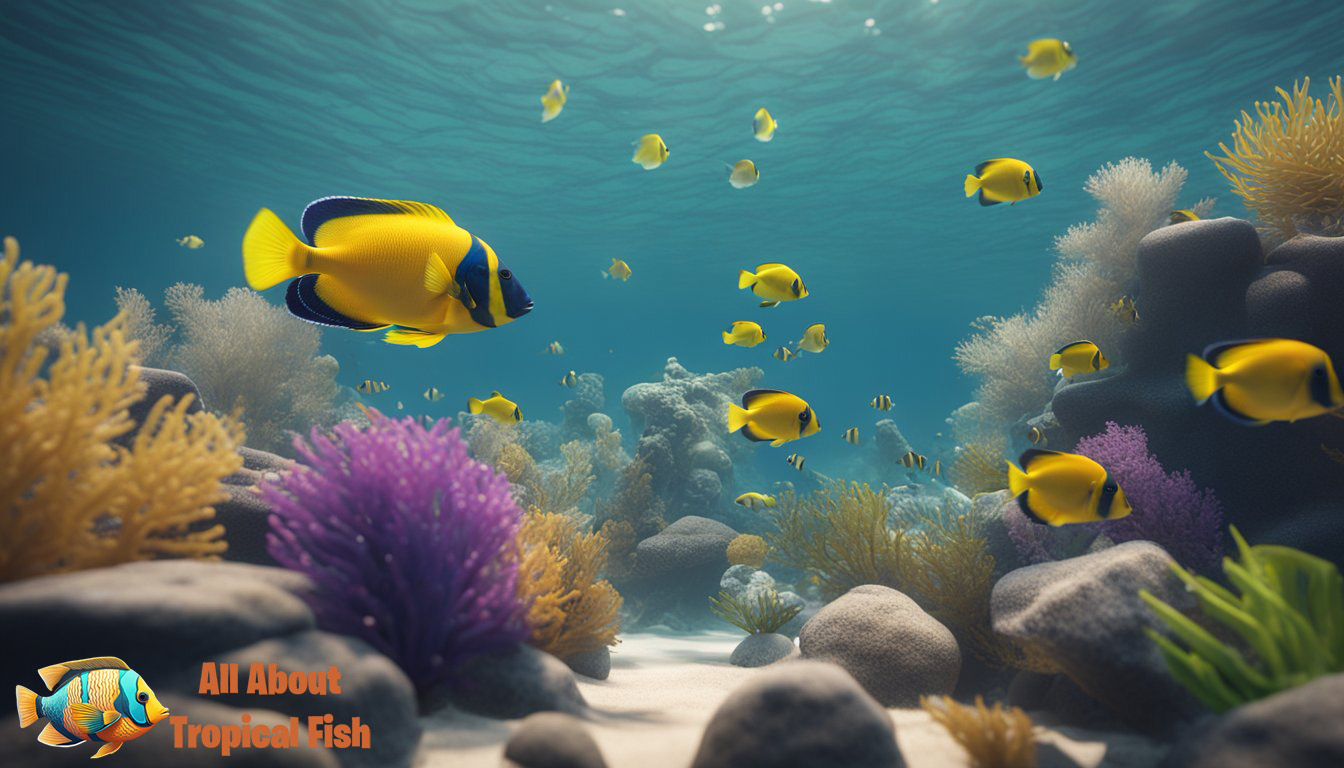
When managing an aquarium, always consider the pH level crucial for the health and well-being of the fish. The right balance between acidity and alkalinity ensures a stable environment that promotes the thriving of diverse aquatic species.
Acidic, Neutral, and Alkaline Water Explained
Water pH is a direct measure of its acidity or alkalinity. On the scale:
- pH below 7 is acidic: It has a higher concentration of hydrogen ions (H+).
- pH of exactly 7 is neutral: Hydrogen ions (H+) and hydroxide ions (OH–) are balanced.
- pH above 7 is alkaline (basic): It contains more hydroxide ions (OH–).
The Role of Hydrogen Ions and Hydroxide Ions
It all boils down to hydrogen ions (H+) and hydroxide ions (OH–):
- High (H+) levels mean more acidic water.
- High (OH–) levels indicate greater alkalinity.
These ions determine not just the pH, but also the overall chemical environment that fish are exposed to in their habitat.
Buffering Capacity and Stability
Buffering capacity is the water’s ability to maintain stable pH levels despite external changes. A high buffering capacity comes from a balance of:
- Bicarbonate (HCO₃⁻)
- Carbonate (CO₃²⁻)
- Other minerals
This stability is essential for reducing stress and promoting health in my aquarium’s inhabitants, maintaining an equilibrium despite factors like waste breakdown or excess food that might otherwise shift pH levels.
Common Issues Related to PH in Aquariums
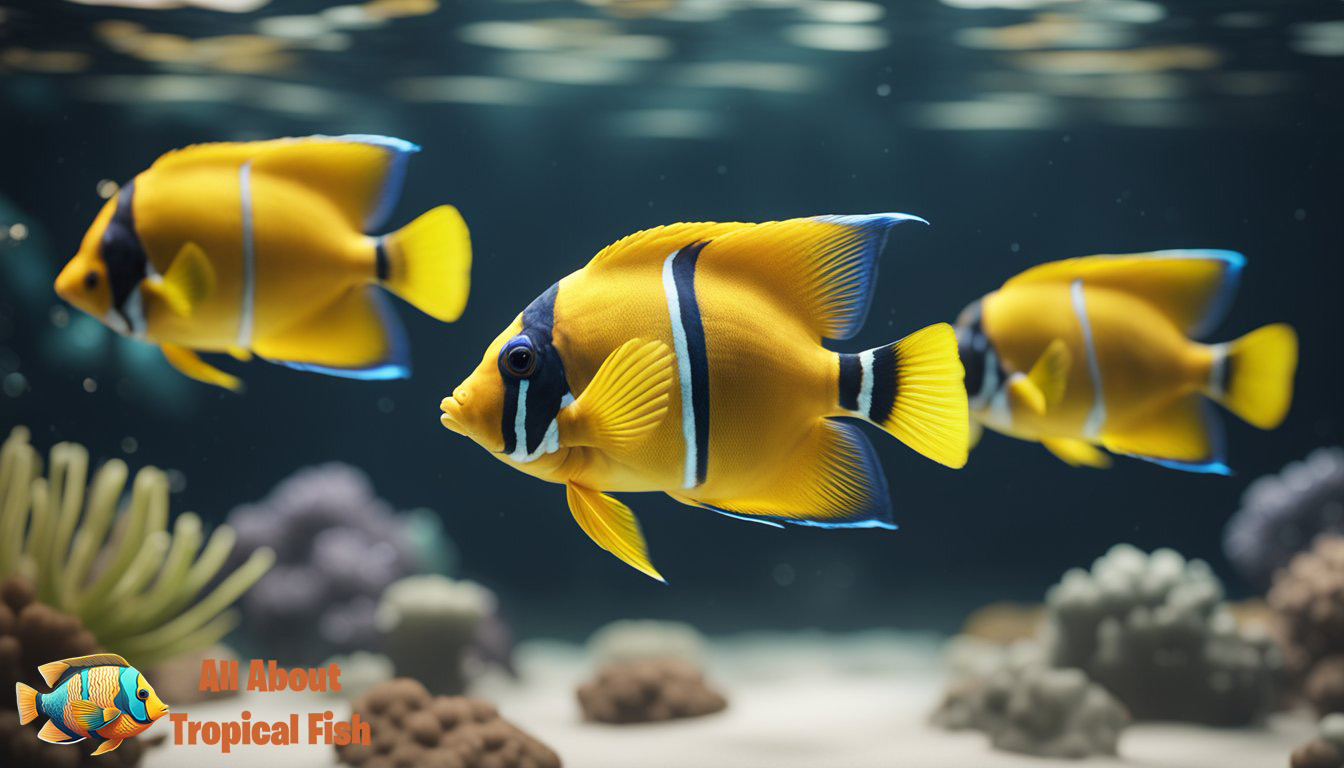
Maintaining proper pH levels in an aquarium is crucial for the health of tropical fish. Both high and low pH values can lead to serious complications, from stress to fatal conditions for your aquatic pets.
High PH and Its Effects on Freshwater Fish
When an aquarium’s pH leans towards the higher end of the scale, it becomes alkaline, which may not be suitable for all freshwater fish. African cichlids are an example of fish that thrive in higher pH levels, between 7.8 and 8.5. However, most tropical fish prefer a pH range of 6.8 to 7.8. High pH levels can lead to toxicity in water, causing stress, illness, and potentially death in species not adapted to such conditions.
Low PH and the Risks of Acidity
On the other hand, low pH indicates acidic water. This environment can be beneficial for fish such as Discus, which prefer a pH range of 5.5 to 6.5. Nevertheless, a pH that drops too low can result in a pH crash, profoundly impacting the buffering capacity of the aquarium, leading to stress and illness in fish.
Preventing and Handling PH Fluctuations
An approach to preventing pH fluctuations includes regular monitoring and maintenance. Here’s what to focus on to maintain stable pH levels:
- Regular Water Changes: This helps dilute the chemicals that can alter the pH.
- Test Water Frequently: Keeping a close eye on pH levels alerts to any shifts, allowing for prompt adjustments.
- Use Proper Substrate: Certain substrates can help buffer the water and keep pH levels stable.
- Introduce Decorations Carefully: Some decorations can affect pH, either raising or lowering it depending on the material.
More details on this below…
Water Chemistry and Hardness
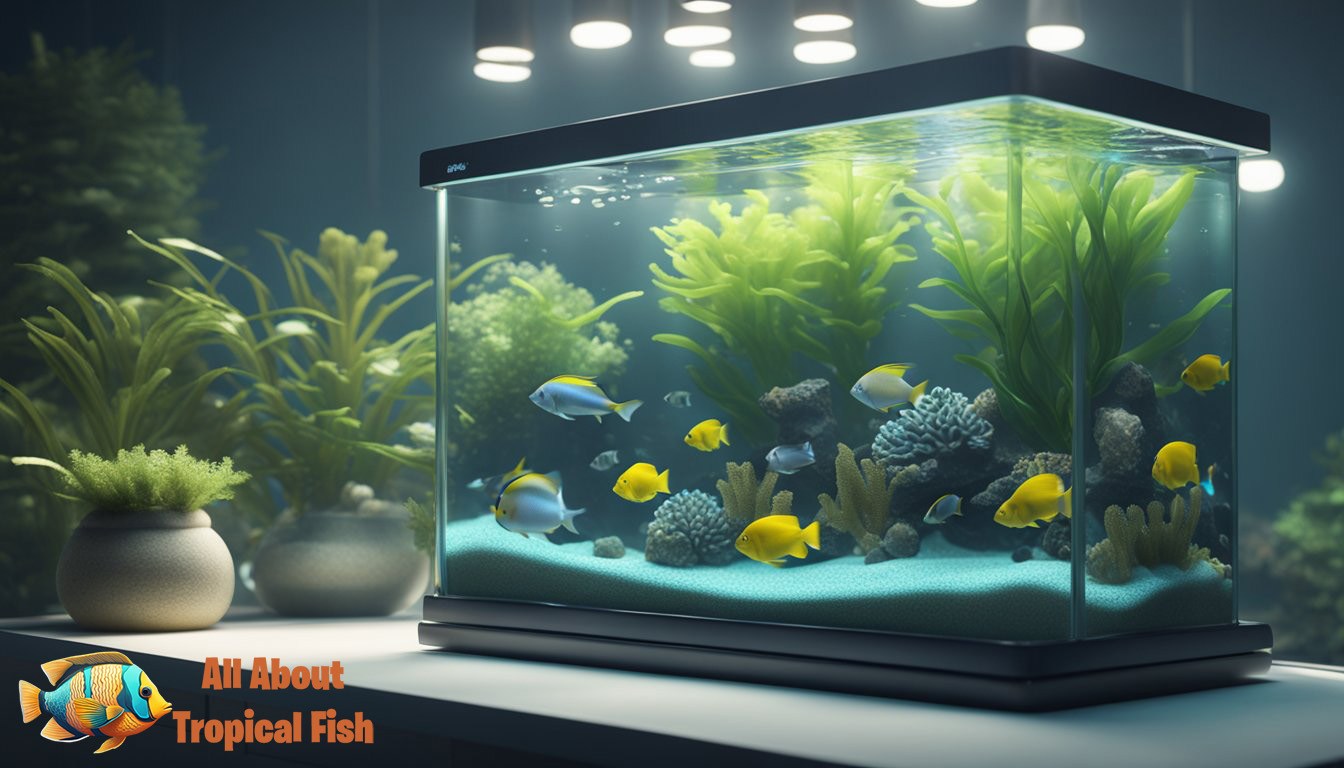
Maintaining the right water chemistry and hardness is crucial for the health and well-being of tropical fish. Much of this revolves around understanding and managing GH (general hardness), KH (carbonate hardness), and their interplay with pH levels.
Understanding GH, KH, and Their Impact on PH
GH, or General Hardness, refers to the concentration of magnesium (Mg) and calcium (Ca) minerals in water. These are essential for the health of fish and their biological processes. GH levels between 4-8 degrees dGH (70-140 ppm) are typically suitable for most freshwater tropical fish.
KH, or Carbonate Hardness, measures the water’s buffering capacity, which helps stabilize the pH levels. A KH reading of 4-8 dKH (70-140 ppm) supports a stable environment, preventing sudden pH crashes that could harm your tropical fish.
Minerals Leading to Water Hardness
The main minerals contributing to water hardness are:
- Calcium (Ca): Integral for fish bone development and metabolism.
- Magnesium (Mg): Essential for enzymatic activity and overall fish health.
The total concentration of these minerals determines the GH of your aquarium. Even fish that tolerate a range of conditions benefit from consistent hardness levels, which mimic their natural habitats.
Adjusting Water Hardness
To increase water hardness, you can use additives that contain calcium or magnesium. Crushed coral or limestone can also naturally increase hardness.
If you need to decrease hardness, options include:
- Using reverse osmosis or deionized water.
- Adding peat moss to the filter.
Aquarium Maintenance and PH Management
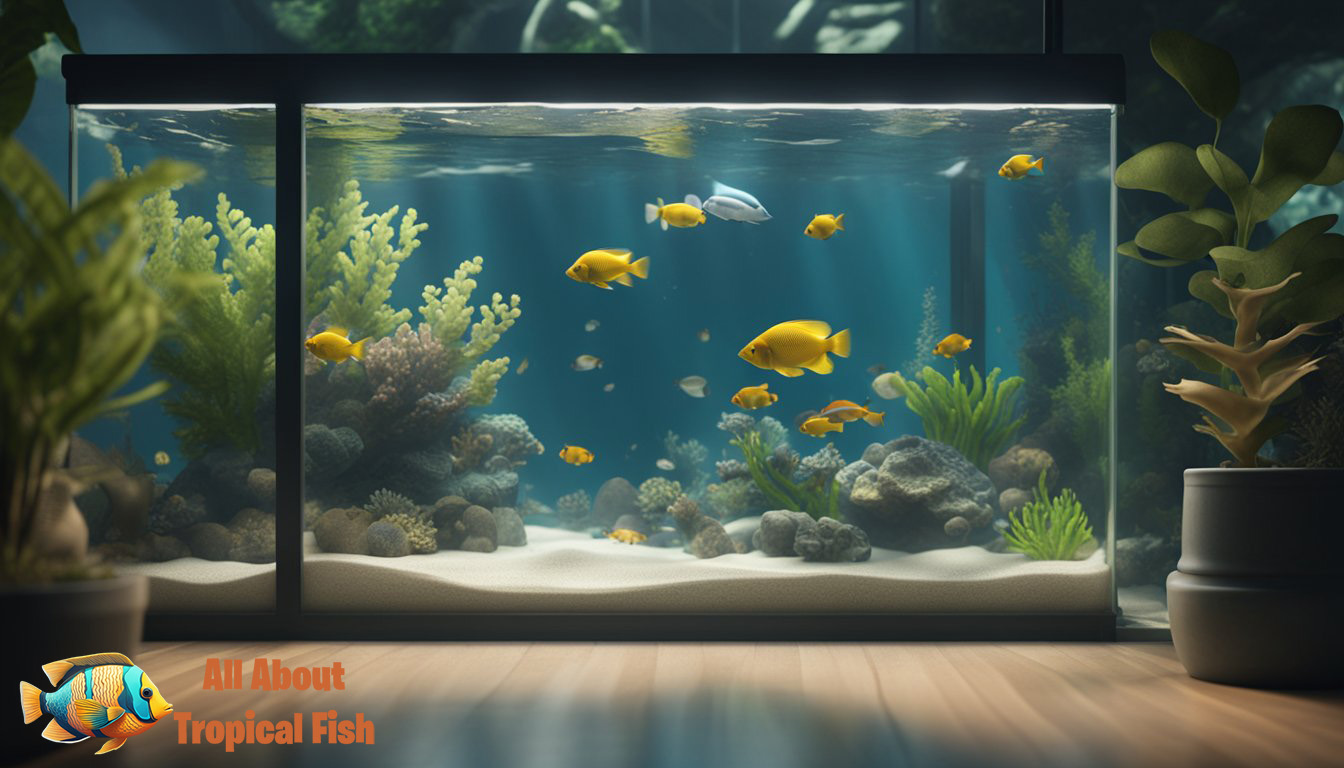
Routine Water Changes and PH
Regular water changes are essential for maintaining a stable pH. Typically, changing 10-25% of the tank water every two weeks is recommended. This not only replenishes essential minerals but also prevents a buildup of organic waste that can alter the pH.
- Weekly Maintenance: Check pH levels weekly to detect any significant changes.
- Water Source: Be aware of the pH of your tap water, as it will influence your aquarium’s conditions.
Effect of Substrates and Decorations on PH
Choosing the right substrate and decorations can have a significant impact on the pH level in my aquarium. Certain substrates, like crushed coral, can increase the pH, while driftwood can lower it. Always consider the pH preferences of fish when selecting these items for an aquarium.
- Crushed Coral: Raises pH — suitable for African cichlids.
- Peat Moss: Lowers pH — a good choice for Amazon-based species.
Role of Plants and Algae in PH Regulation
Live plants can be quite helpful in regulating pH levels due to their consumption of carbon dioxide during photosynthesis. On the flip side, excessive algae growth can cause pH to fluctuate. Use a balanced approach of lighting, nutrient control, and regular tank maintenance to manage plants and algae.
- Aquatic Plants: Stabilize pH by absorbing CO2.
- Algae Control: Essential to prevent pH swings and maintain a healthy environment.
Aquarium Cycling and PH
The cycling process establishes beneficial bacteria in the filtration system, which is critical for a stable pH. Ensure your tank undergoes proper cycling before introducing fish. During the initial stages of cycling, I often observe natural pH fluctuations and address them promptly.
- Beneficial Bacteria: They play a role in nitrogen cycling, impacting pH stability.
- New Setup: Monitor pH levels frequently as the aquarium cycles.
Regular monitoring and adjustments are keys to my success in aquarium maintenance and pH management.
Tropical Fish Species and PH Requirements
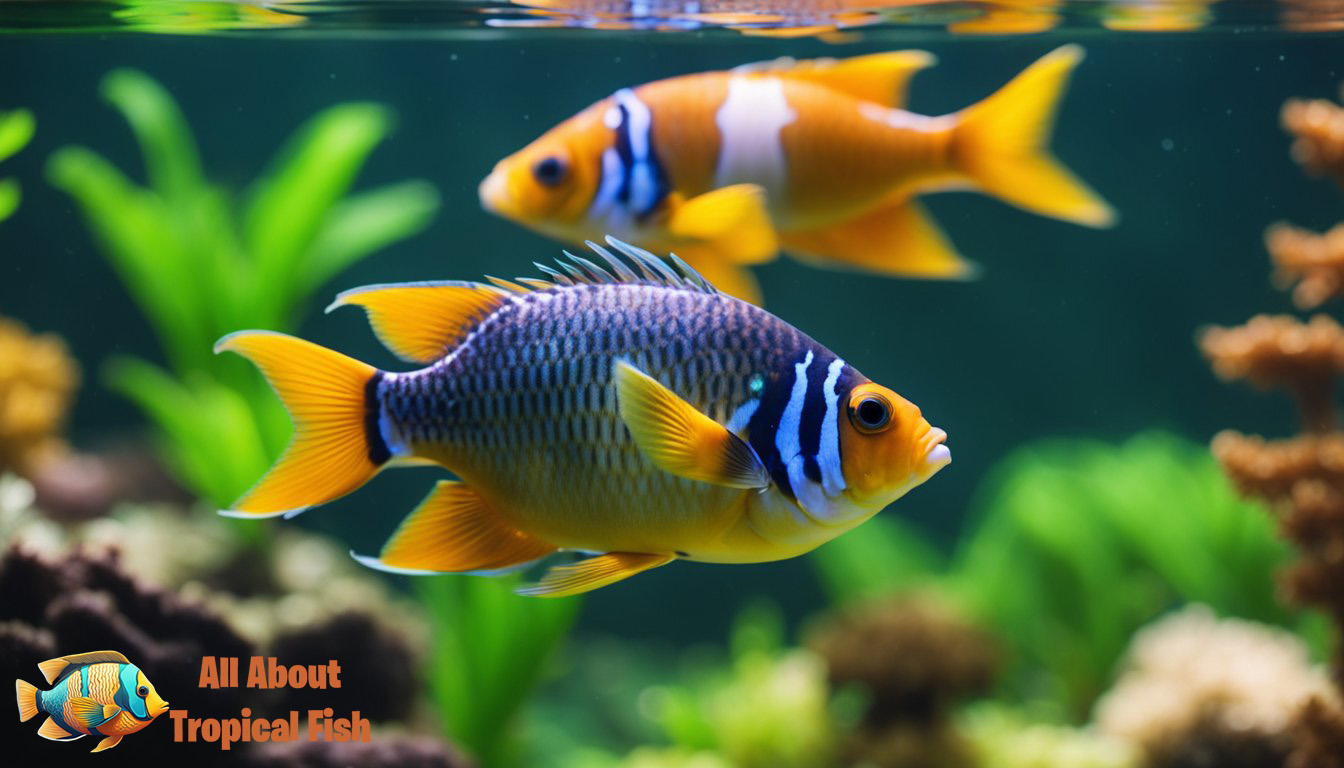
pH preferences vary for many of the popular freshwater fish. The water pH can impact on your aquatic life, and additional considerations should be made for breeding within specific pH levels.
PH Preferences for Popular Freshwater Fish
When setting up an aquarium for tropical fish, always ensure the pH is suitable for the species you are keeping. Most tropical freshwater fish thrive in a pH range of 6.5 to 8.0, but some specific species have unique requirements. For instance:
- Discus: These elegant fish prefer a slightly acidic environment, typically between 5.5 and 6.5.
- African cichlids: They enjoy a more alkaline setting, often ideal between 7.8 and 8.5.
- Neon tetras and angelfish: They usually do well in a neutral to slightly acidic range of 6.5 to 7.0.
Breeding and PH Levels
When it comes to breeding, pH levels are even more crucial. If planning to breed tropical fish, make sure the pH is not only within the preferred range but also at the optimal level for breeding. Some species, like Discus, require more specific conditions to initiate breeding behaviors:
- Discus: A lower pH, usually around 6.0, can encourage spawning.
Monitoring and maintaining stable pH levels can significantly improve the chances of successful breeding in your aquarium.
Natural and Chemical Methods for Adjusting PH
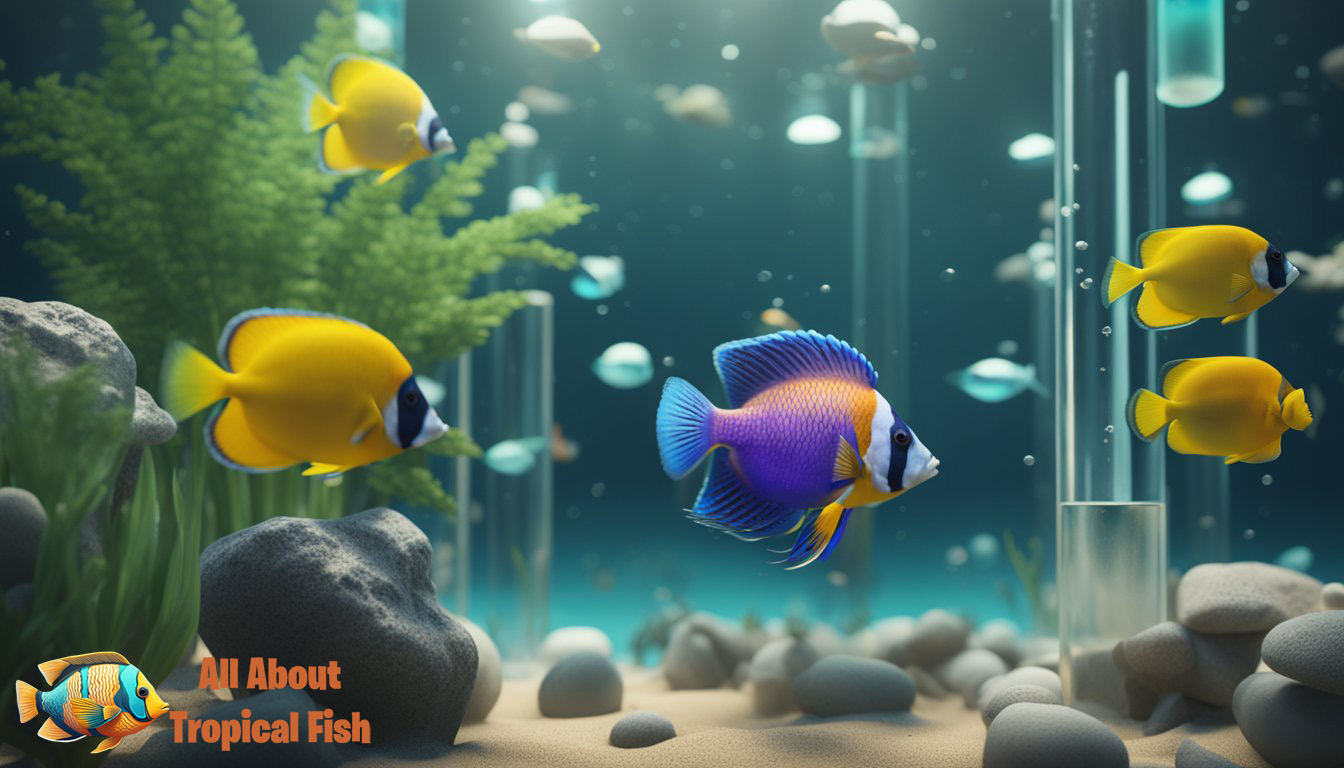
Adjusting the pH levels in an aquarium is essential for the health and comfort of the aquatic life it supports. Here are some ways to naturally alter pH as well as options for chemical adjusters, always considering the safety of our finned friends.
Using Driftwood, Peat Moss, and Almond Leaves
Natural elements such as driftwood, peat moss, and almond leaves can effectively lower the pH in an aquarium. Driftwood releases tannins into the water, which not only tints the water a natural brown color but also gradually reduces the pH. Meanwhile, peat moss can be added to the filter or directly into the tank in a mesh bag. Similarly, almond leaves release tannic acid when they decompose, providing a soft, acidic environment many tropical fish thrive in.
- Peat: Before using, soak it to remove excess tannins and avoid staining the water too much.
- Almond Leaves: These should be replaced every few weeks to maintain their effectiveness.
Chemical Adjusters and Their Safe Use
When quicker adjustments are needed, chemical pH adjusters can be a reliable option. Many products contain limestone, crushed coral, or dolomite to increase pH because they slowly dissolve, releasing minerals that buffer the water’s acidity. For decreasing pH, products designed to safely lower pH levels without drastic changes work well.
- Always start with small amounts of chemical adjusters and test the water frequently.
- Follow the instructions carefully, integrating them slowly to avoid shocking my aquarium inhabitants.
Innovative Solutions Like Reverse Osmosis
For precise control over water parameters, a reverse osmosis system is one of the most innovative solutions. It purifies incoming water, stripping it of minerals and contaminants, which allows one to adjust the water to the exact pH needed. By remineralizing the RO water, you can ensure your fish get the necessary minerals needed for optimal health.
- Reverse osmosis systems can initially be more expensive, but they offer more long-term control over pH and overall water quality. For more expensive setups they can be worth while.
Troubleshooting Common PH Problems
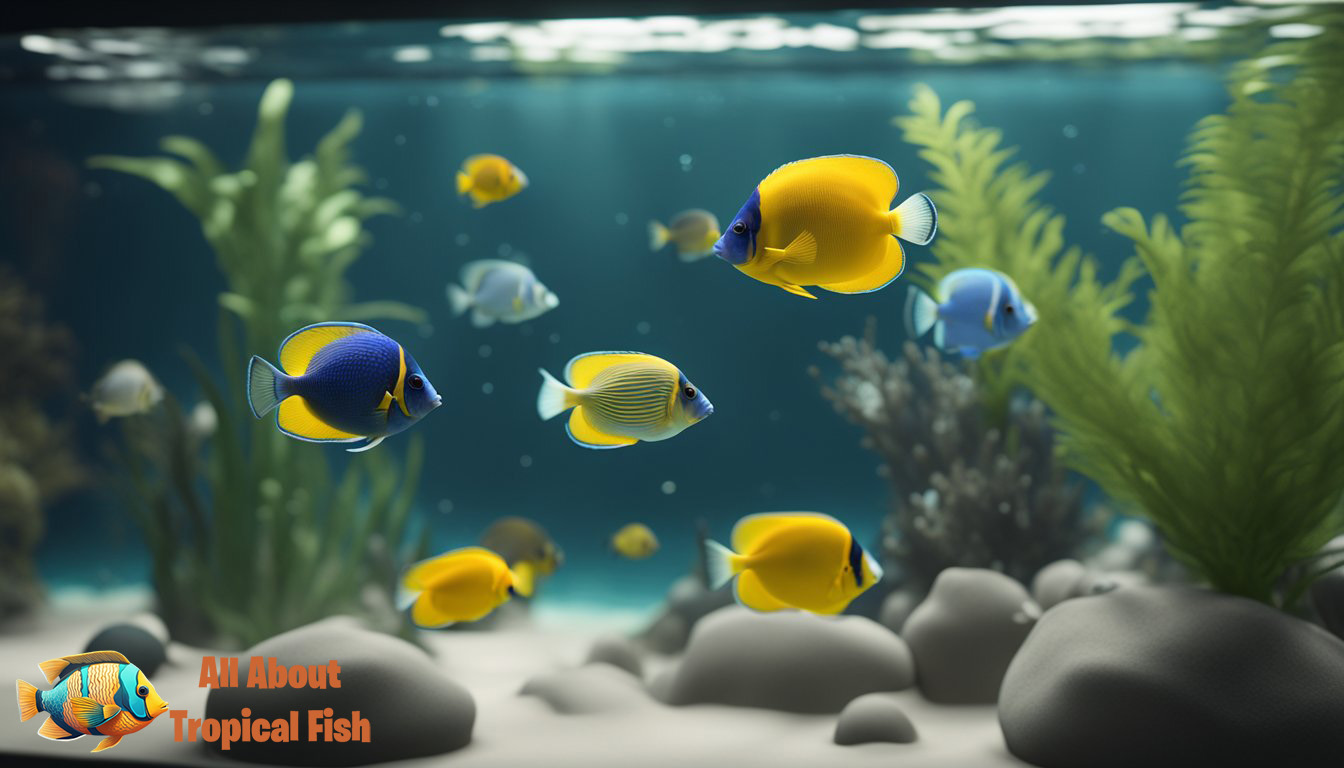
Identifying Signs of PH Stress in Fish
When tropical fish are experiencing pH stress, they often exhibit clear physical and behavioral symptoms. For example, stress can manifest as fish gasping for air at the water’s surface or showing signs of lethargy. Cloudy water can also be a telltale sign of pH imbalance. To ensure the well-being of the inhabitants, it’s essential to regularly monitor water parameters and observe any changes in your fish’s behavior closely.
- Breathing: Fish gasping at the water’s surface
- Activity Levels: Fish less active or hiding more than usual
- Appearance: Unusual spots or discoloration on the body
- Water Clarity: Cloudy or murky water appearance
Dealing with Sudden PH Changes
A pH crash can happen due to various factors including overfeeding, decay of organic matter, or overuse of pH altering substances. To correct sudden changes, I first recommend testing the water with a reliable pH test kit. If a sudden drop in pH is detected, consider:
- Partial water changes to dilute any acids or contaminants
- Use of a pH buffer to stabilize the water
It’s crucial to make adjustments gradually to avoid further shock to the fish.
Long-Term PH Stability and Fish Health
Ensuring long-term pH stability mainly involves two practices: regular maintenance and monitoring water quality. Make it a regular routine to:
- Test pH regularly: Use test kits to keep an eye on pH levels weekly.
- Monitor Tank Environment: Check on filtration systems and avoid overcrowding.
- Perform Consistent Water Changes: Replace 20-25% of the tank water bimonthly.
Frequently Asked Questions
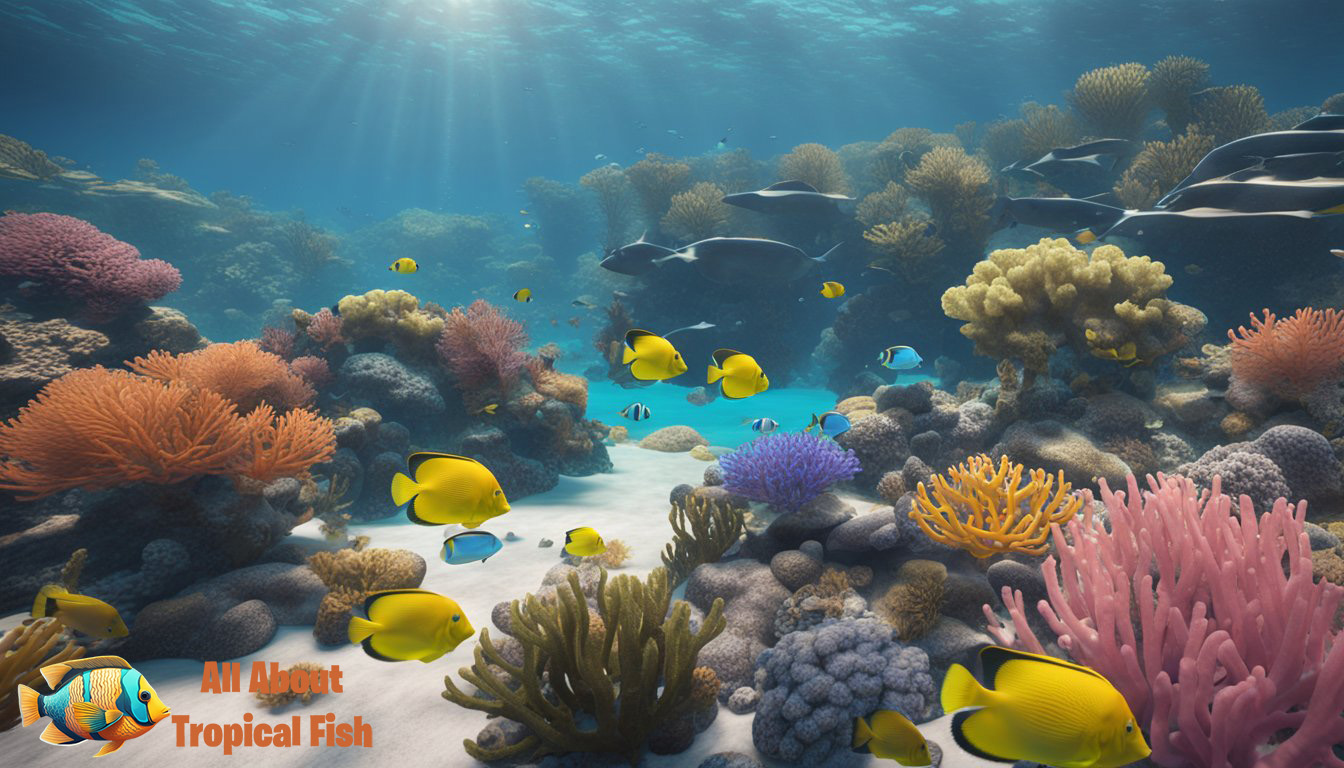
What is the ideal pH level for tropical fish in an aquarium?
The ideal pH level for most tropical fish falls between 6.5 and 7.8. However, specific species like Discus prefer a lower pH range of 5.5 to 6.5, while African cichlids thrive in higher pH levels of 7.8 to 8.5.
How can I adjust the pH level in my fish tank if it’s too high?
To lower pH, you can use slower, natural methods such as adding driftwood or peat moss to the tank. You may also use a commercial pH reducer following the instructions on the label.
What are the indicators of low pH in a fish tank and how does it affect the fish?
Signs of low pH include fish gasping at the surface or showing less activity. Low pH can lead to increased stress and higher susceptibility to disease in fish.
Can you recommend a reliable pH testing method for a home aquarium?
Preferred testing methods include liquid pH test kits or digital pH meters for their accuracy. It’s important to regularly monitor pH levels for any changes.
How do fluctuations in pH levels impact the health of tropical fish?
Sudden changes in pH can shock fish, potentially leading to weakened immune systems or even death. It’s crucial to make any pH adjustments gradually.
What steps should I take to maintain a stable pH level in a freshwater aquarium?
Regular maintenance such as partial water changes, monitoring pH regularly, and avoiding overfeeding can help maintain a stable pH. Also, make sure that any new water added matches the aquarium’s current pH.



Leave a Reply